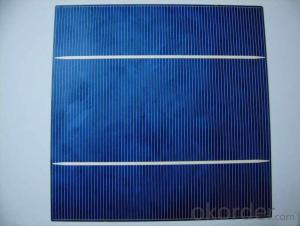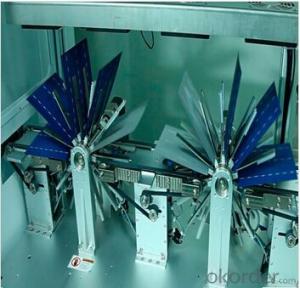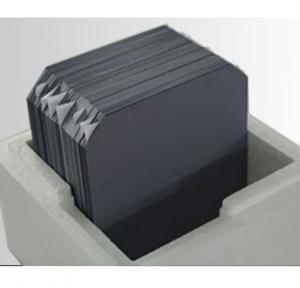185W Solar Energy System Solar Panel Monocrystalline Silicon Solar Cells
- Loading Port:
- China main port
- Payment Terms:
- TT OR LC
- Min Order Qty:
- 100 watt
- Supply Capability:
- 10000 watt/month
OKorder Service Pledge
OKorder Financial Service
You Might Also Like
185W Solar Energy System Solar Panel Monocrystalline Silicon Solar Cells
Main Characteristic
17.6%-18% High Efficiency A Grade 125mm Monocrystalline Solar Cells
1.First-class production technology and packaging technology.
2.Adopting the world's leading technology of silicon and polycrystalline silicon cells, power density, peak hours more battery power, higher conversion efficiency.
3.Beautiful, stable, easy to take down the anodic aluminum frame electric degrees and has a wind-resistant, anti-snow function.
Eff(%) | 18.00- 18.10 | 18.10- 18.20 | 18.20- 18.30 | 18.30- 18.40 | 18.40- 18.50 | 18.50- 18.60 | 18.60- 18.70 | 18.70- 18.80 | 18.80- 18.90 | 18.9- 19.0 | 19.1- 19.1 | 19.1- 19.2 |
Pm(W) | 4.30 | 4.33 | 4.35 | 4.37 | 4.40 | 4.42 | 4.44 | 4.47 | 4.49 | 4.52 | 4.54 | 4.56 |
Isc(A) | 8.71 | 8.73 | 8.76 | 8.77 | 8.78 | 8.82 | 8.83 | 8.85 | 8.86 | 8.88 | 8.9 | 8.93 |
Im(A) | 8.19 | 8.21 | 8.24 | 8.26 | 8.30 | 8.33 | 8.35 | 8.39 | 8.42 | 8.45 | 8.47 | 8.51 |
Voc(V) | 0.630 | 0.631 | 0.632 | 0.633 | 0.634 | 0.634 | 0.635 | 0.636 | 0.637 | 0.637 | 0.638 | 0.64 |
Vm(V) | 0.527 | 0.528 | 0.529 | 0.531 | 0.531 | 0.532 | 0.534 | 0.534 | 0.535 | 0.536 | 0.537 | 0.538 |
FF(%) | 78.6 | 78.7 | 78.8 | 79.0 | 79.2 | 79.3 | 79.5 | 79.6 | 79.8 | 80 | 80 | 80 |
Product Show

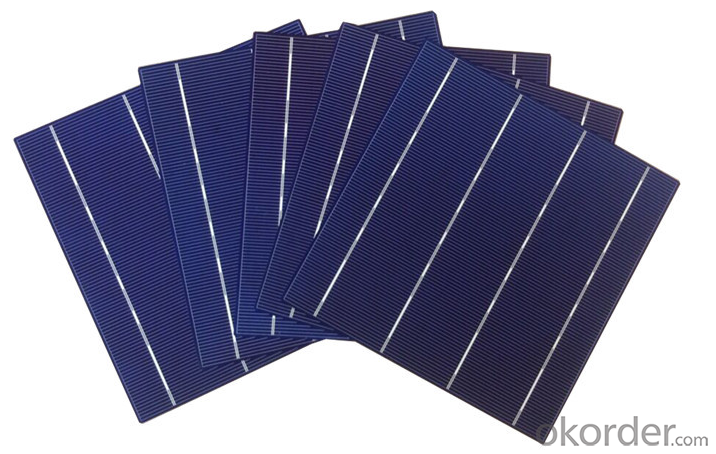
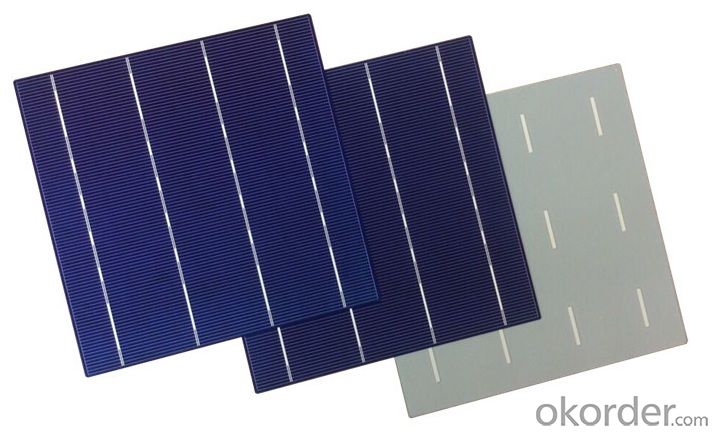
Shipping
1. Shipment shall be made only after PAYMENT is received.
2. Please do inform us your DETAILED ADDRESS AND CONTACT INFOMATION before shipment.
3. Shipment shall be made in THREE WORKING DAYS.
- Q:Can solar silicon wafers be made flexible for applications in wearable devices?
- Yes, solar silicon wafers can be made flexible for applications in wearable devices. Advances in technology have allowed for the development of flexible solar cells that use thin-film materials instead of rigid silicon wafers. These flexible solar cells can be integrated into wearable devices, such as smartwatches or clothing, allowing them to generate power from sunlight while maintaining their flexibility and functionality.
- Q:How are solar silicon wafers affected by surface passivation techniques?
- Surface passivation techniques have a significant impact on solar silicon wafers. These techniques help reduce surface recombination by creating a protective layer that minimizes the chances of charge carriers recombining at the surface. This improves the overall efficiency and performance of solar cells by enhancing their ability to capture and convert sunlight into electricity.
- Q:What is the role of surface recombination on solar silicon wafers?
- The role of surface recombination on solar silicon wafers is to hinder the efficiency of the solar cell by reducing the rate at which charge carriers (electrons and holes) recombine at the surface of the wafer. This phenomenon decreases the overall performance of the solar cell by limiting the amount of generated electricity. Efforts are made to minimize surface recombination through various surface passivation techniques, such as applying anti-reflection coatings or using passivating layers, in order to enhance the efficiency of solar cells.
- Q:What is the purpose of a solar silicon wafer in solar cell production?
- The purpose of a solar silicon wafer in solar cell production is to serve as the base material for the solar cell. The wafer is typically made of high-purity silicon and acts as the foundation upon which the solar cell components are built. It provides a platform for the deposition of various layers and materials that form the solar cell structure and enable the conversion of sunlight into electricity.
- Q:How are solar silicon wafers tested for electrical contact resistance?
- Solar silicon wafers are tested for electrical contact resistance through a process known as the four-point probe measurement technique. This involves placing four probes in a specific configuration on the surface of the wafer and applying a known current through two of the probes while measuring the resulting voltage drop across the other two probes. By analyzing the voltage and current data, the electrical contact resistance can be accurately determined.
- Q:Polished silicon wafers can be most SEM substrates
- In other words, only nano materials will consider the use of polished silicon wafer sample carrier. Micron submicron level, waste, direct double-sided conductive adhesive tape can be.
- Q:Can solar silicon wafers be used in marine or offshore applications?
- Yes, solar silicon wafers can be used in marine or offshore applications. However, special considerations need to be taken into account due to the harsh marine environment, such as protection against corrosion, water resistance, and durability against high winds and saltwater exposure.
- Q:What are the different types of junction box sealants used on solar silicon wafers?
- There are several types of junction box sealants used on solar silicon wafers, including silicone, epoxy, and polyurethane. These sealants are applied to protect the junction box and its components from moisture, dust, and other environmental factors, ensuring the long-term durability and performance of the solar panels.
- Q:How are solar silicon wafers protected from hailstorms?
- Solar silicon wafers are typically protected from hailstorms through the use of tempered glass or specialized coatings on the surface of the solar panels. These protective layers are designed to provide an extra layer of durability and resistance to hail impact, minimizing potential damage to the solar cells and ensuring the long-term efficiency of the panels.
- Q:What is the typical power output of a solar silicon wafer?
- The typical power output of a solar silicon wafer can range from around 200 to 300 watts per square meter, depending on the efficiency of the solar cells and the quality of the silicon material used.
1. Manufacturer Overview |
|
|---|---|
| Location | |
| Year Established | |
| Annual Output Value | |
| Main Markets | |
| Company Certifications | |
2. Manufacturer Certificates |
|
|---|---|
| a) Certification Name | |
| Range | |
| Reference | |
| Validity Period | |
3. Manufacturer Capability |
|
|---|---|
| a)Trade Capacity | |
| Nearest Port | |
| Export Percentage | |
| No.of Employees in Trade Department | |
| Language Spoken: | |
| b)Factory Information | |
| Factory Size: | |
| No. of Production Lines | |
| Contract Manufacturing | |
| Product Price Range | |
Send your message to us
185W Solar Energy System Solar Panel Monocrystalline Silicon Solar Cells
- Loading Port:
- China main port
- Payment Terms:
- TT OR LC
- Min Order Qty:
- 100 watt
- Supply Capability:
- 10000 watt/month
OKorder Service Pledge
OKorder Financial Service
Similar products
New products
Hot products
Hot Searches
Related keywords




















